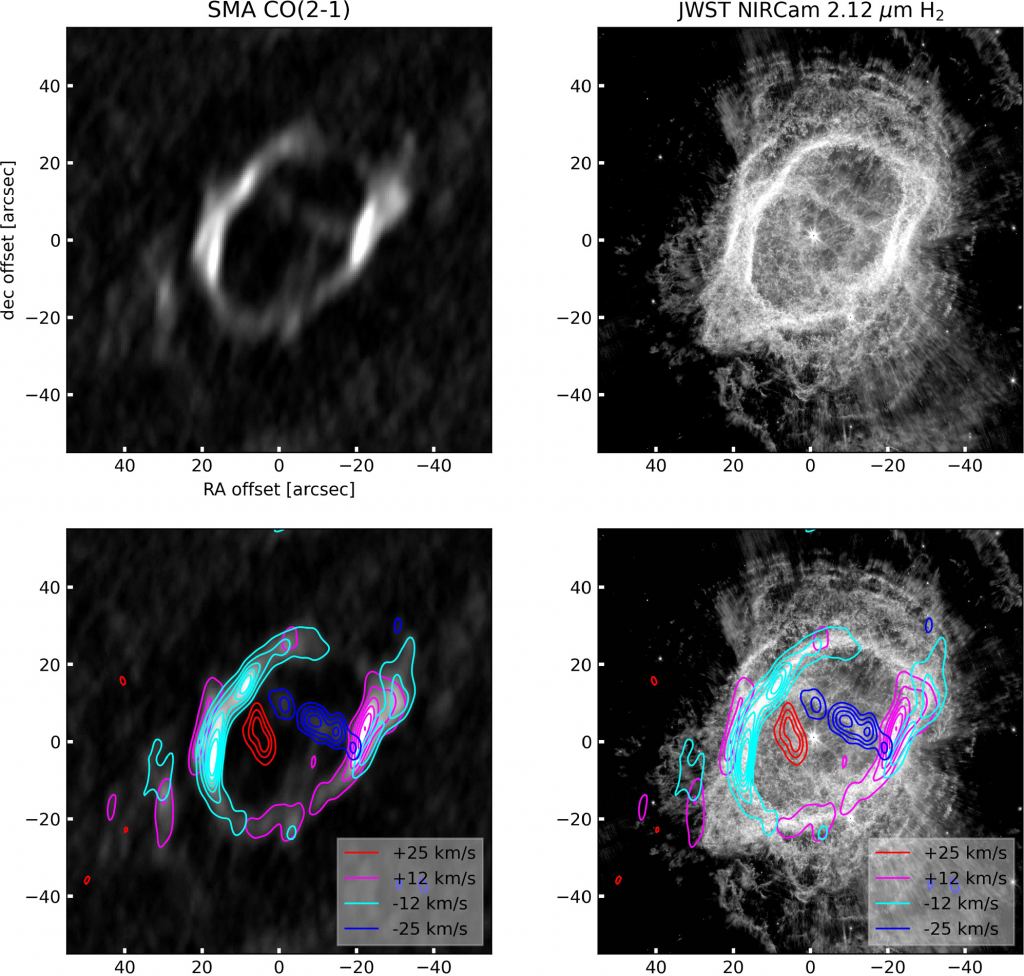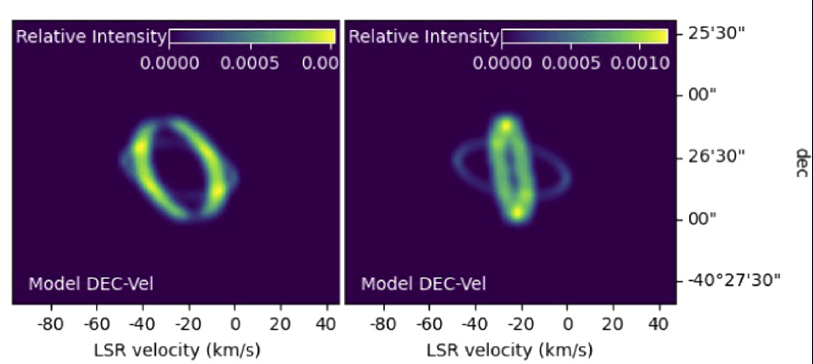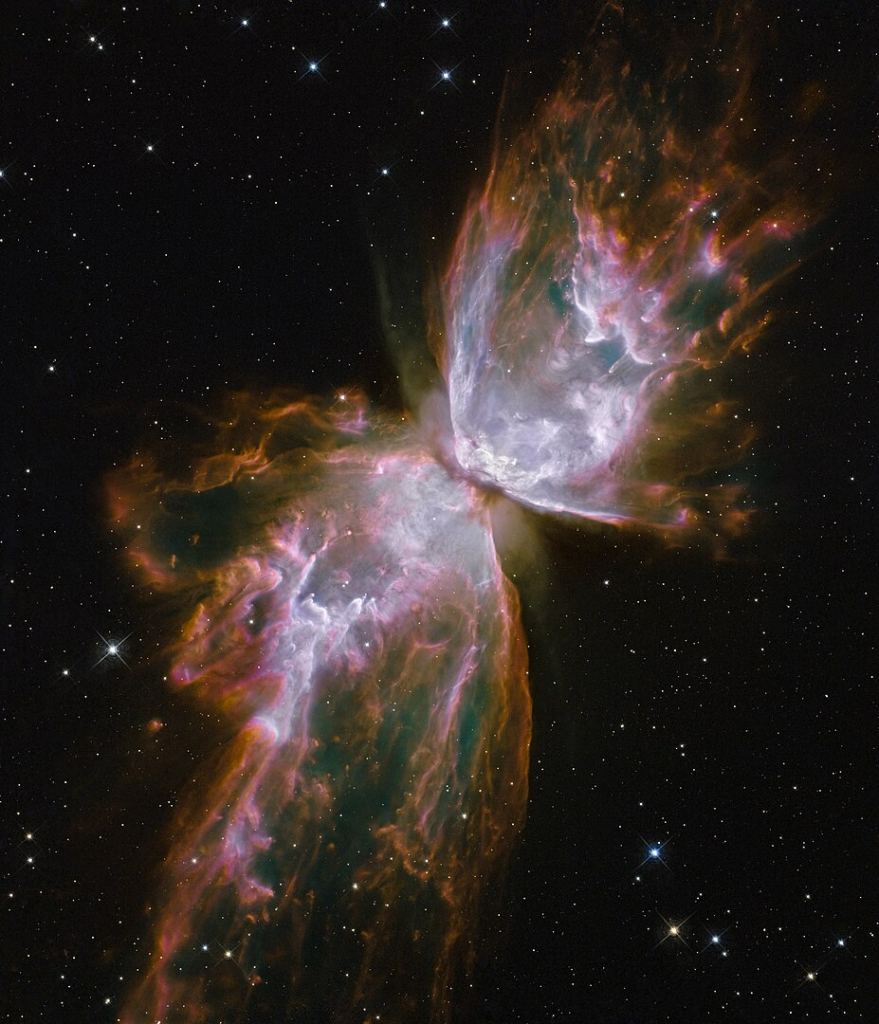Planetary nebulae are one of nature’s most stunning visual displays. The name is confusing because they are the remnants of stars, not planets. But this does not detract from their status as objects of fascinating beauty and intense scientific research.
Like all planetary nebulae, the Southern Ring Nebula is the remnant of a star like the Sun. As these stars age, they will eventually become red giants, expanding and releasing layers of gas into space. Eventually, the red giant becomes a white dwarf, a remnant of a star that has not undergone fusion, giving off whatever residual thermal energy it has and no longer producing any heat. The white dwarf illuminates the shell of previously expelled gas, and we begin to enjoy the show.
When the long-awaited JWST began providing images, the Southern Ring Nebula (NGC 3132) was one of its first targets. It is one of five objects that constituted the telescope’s first scientific results. JWST’s images revealed something surprising about NGC 3132: It has two stars. The white dwarf is at the center of NGC 3132, and its companion star is 40 to 60 AU away, about the same distance as Pluto from the Sun.
Researchers want to learn more about the structure of the Southern Ring Nebula. The James Webb Space Telescope operates in infrared wavelengths to image the warm hydrogen in the nebula. But to get a more complete image of the nebula, a team of researchers at the Rochester Institute of Technology (RIT) turned to the Submillimeter Array (SMA). SMA can sense cooler CO (carbon monoxide) in nebulae that JWST cannot reach. It senses the presence of carbon dioxide and measures its speed and the speed of other molecules.
The study was published in The Astrophysical Journal and is titled “Molecular exoskeleton of the ring planetary nebula NGC 3132.” Professor Joel Kastner of RIT’s School of Physics and Astronomy is the lead author.
The new observations show that most of the nebula’s hydrogen gas is contained in a large bulging ring, with a second bulging ring nearly perpendicular to the first.
“JWST shows us hydrogen molecules and how they stack up in the sky, and the submillimeter array shows us cooler carbon monoxide not visible in the JWST images,” Kastner explained.
“The extra velocity dimension from the array’s radio wavelength observations effectively allows us to view the nebula in 3D. When we started rotating the entire nebula in 3D, we immediately discovered that it was indeed a ring, and then we were surprised to find that there was another ring,” Kastner said.
“Surprisingly, the data further indicate that the nebula appears to contain a second dust-rich molecular ring (ring 2), which is responsible for (dust) absorption, low excited emission lines, H2 and (now) 12CO (21) Appears to be almost perpendicular to ring 1,” the authors explained in their published study.

The rings are offset from each other, which explains why the 3D view makes the second ring more visible. The team matched their observations with a geometric model that showed that Ring 1 has an inclination of 45° and Ring 2 has an inclination of 78°.

Why does the Southern Ring Nebula have two offset rings?
The authors say we have a pole view of a bipolar nebula formed by the presence of a second star. There are many bipolar nebulae, including the well-known Butterfly Nebula.

However, the presence of a second star complicates NGC 3132’s shape. The authors explain in the study: “We believe that this apparent two-ring structure may be a remnant of the elliptical molecular envelope of the AGB ejecta, which was mostly surrounded by a series of rapid but misaligned collimated outflows. or jet dispersion. “This scenario is consistent with the hypothesis that the mass-losing AGB precursor of NGC 3132 was a member of an interacting three-star system. “
This would be consistent, but the authors said it was impossible to conclude that a third star was involved in the current study. “Detailed simulations of the dynamic effects of such a multi-star dumping jet system on the AGB molecular envelope are needed to test speculative scenarios for NGC 3132 molecular exoskeleton formation,” the authors explain.
The presence of all the molecular gas in the nebula surprised scientists. The intense ultraviolet light emitted by the white dwarf should break apart carbon monoxide and hydrogen molecules. but it is not the truth.
“Where did the carbon, oxygen, and nitrogen in the universe come from?” Kastner said. “We see it being produced in dying Sun-like stars, like the star that just died and created the Southern Rings. Much of the molecular gas may enter the planet’s atmosphere, which can harbor life.
#Southern #Ring #Nebula
Image Source : www.universetoday.com
